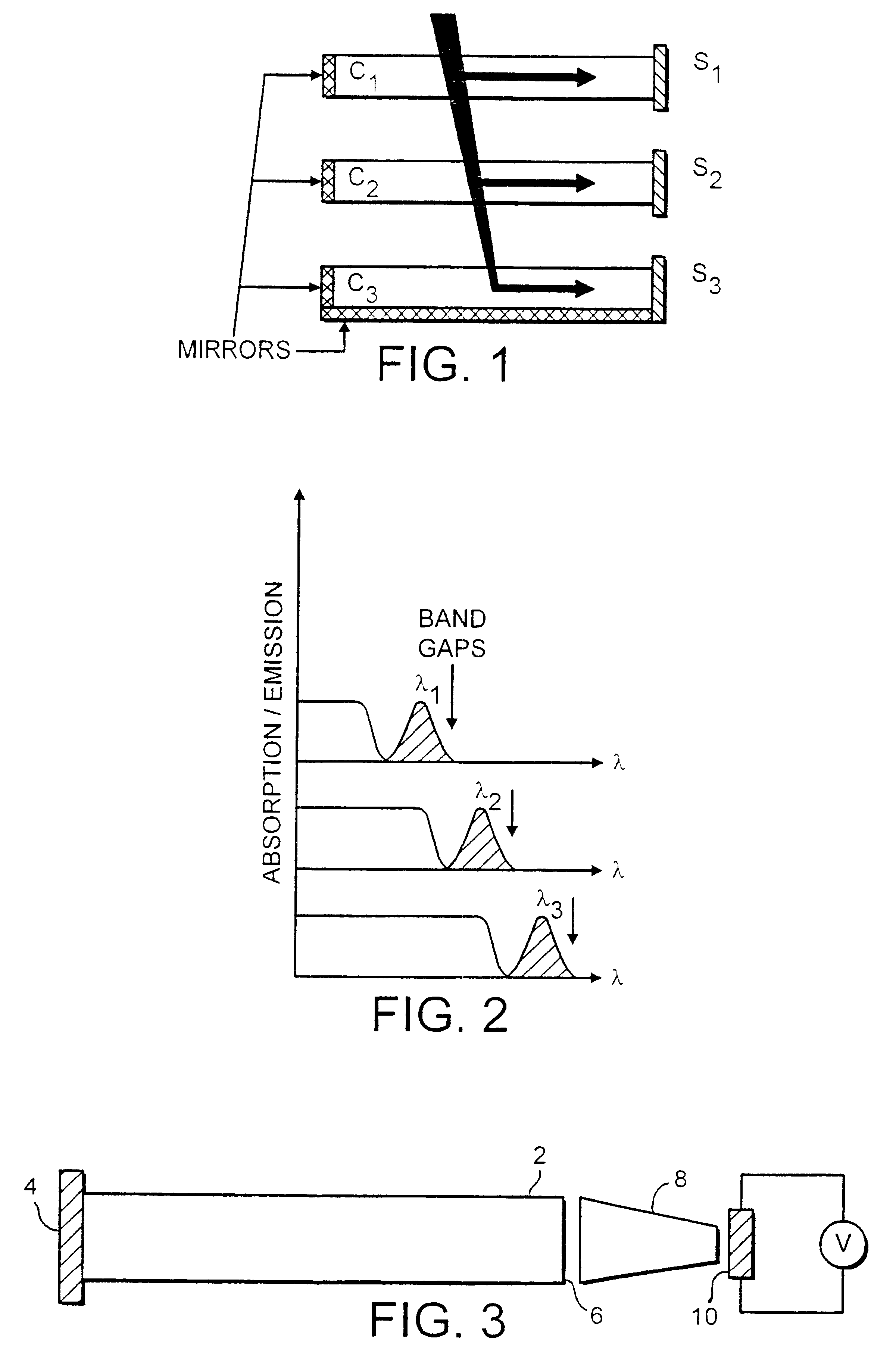Radiation concentrator for a photovoltaic device
a technology of photovoltaic devices and concentrators, which is applied in the direction of photovoltaics, batteries, waveguides, etc., can solve the problems of limited development of these known concentrators, high cost, and inability to meet the requirements of luminescent wavelengths, and achieve the effect of reducing the cost of development and developmen
- Summary
- Abstract
- Description
- Claims
- Application Information
AI Technical Summary
Problems solved by technology
Method used
Image
Examples
Embodiment Construction
We describe herein a new type of luminescent concentrator, the quantum dot concentrator (QDC) which addresses the problems of the prior art. Recent progress in the growth of nanocrystalline semiconductors, by colloidal [see Reference 9] or single-molecule precursor [see Reference 10] techniques, make quantum dots (QDs) a good replacement for luminescent dyes. Such fabrication techniques are suited to mass-production and lead to low costs. Furthermore, as the dots themselves are semiconductor material, in a suitable medium they degrade less in sunlight than organic dues.
An important advantage of QDs over dyes is the ability to tune the absorption threshold simply by choice of dot diameter. Colloidal InP quantum dots, separated by dot size, have been shown to have thresholds which span the 1.5-2.4 eV energy range and hence the optical spectrum [see Reference 11]. In addition colloidal InAs dots can sample infra-red wavelengths [see Reference 12]. A further major advantage is that high...
PUM
| Property | Measurement | Unit |
|---|---|---|
| luminescence quantum yields | aaaaa | aaaaa |
| refractive index | aaaaa | aaaaa |
| temperature | aaaaa | aaaaa |
Abstract
Description
Claims
Application Information
 Login to View More
Login to View More - R&D
- Intellectual Property
- Life Sciences
- Materials
- Tech Scout
- Unparalleled Data Quality
- Higher Quality Content
- 60% Fewer Hallucinations
Browse by: Latest US Patents, China's latest patents, Technical Efficacy Thesaurus, Application Domain, Technology Topic, Popular Technical Reports.
© 2025 PatSnap. All rights reserved.Legal|Privacy policy|Modern Slavery Act Transparency Statement|Sitemap|About US| Contact US: help@patsnap.com



